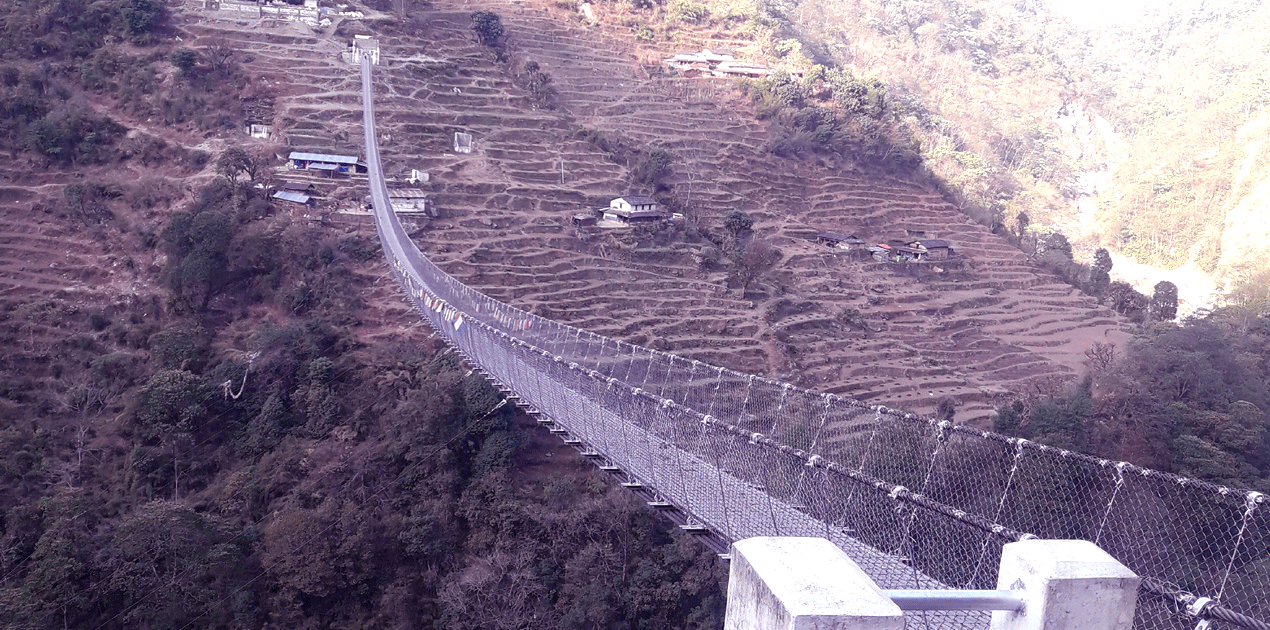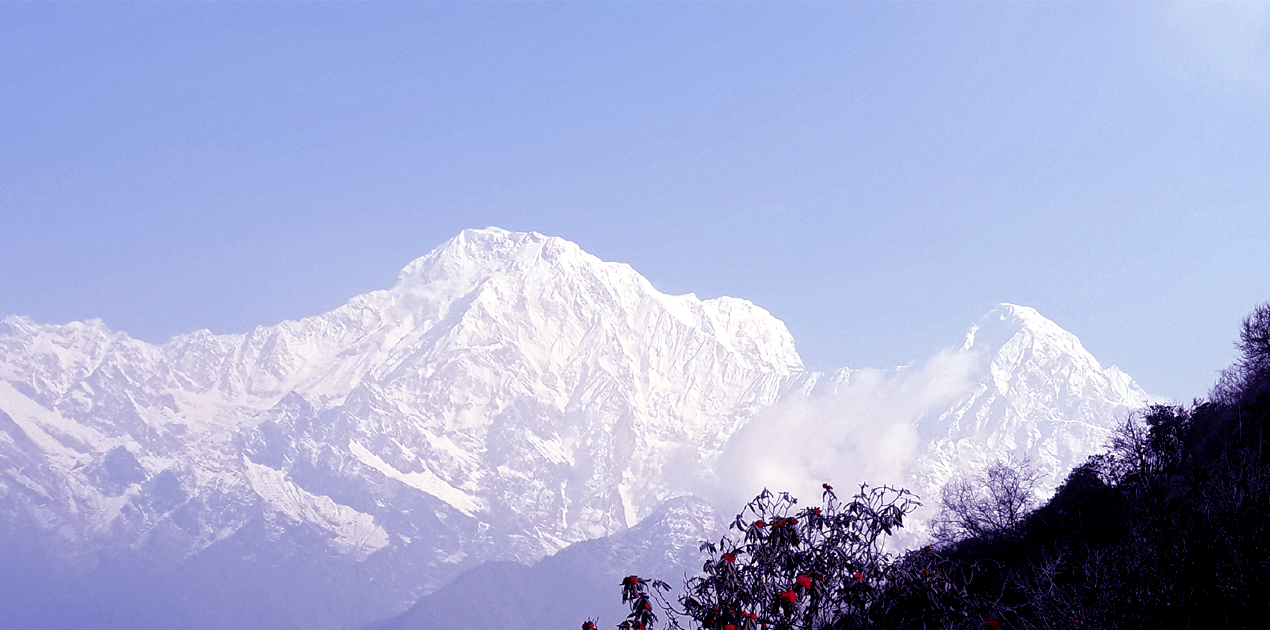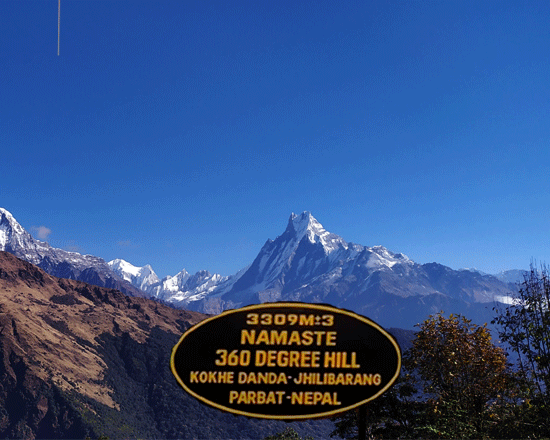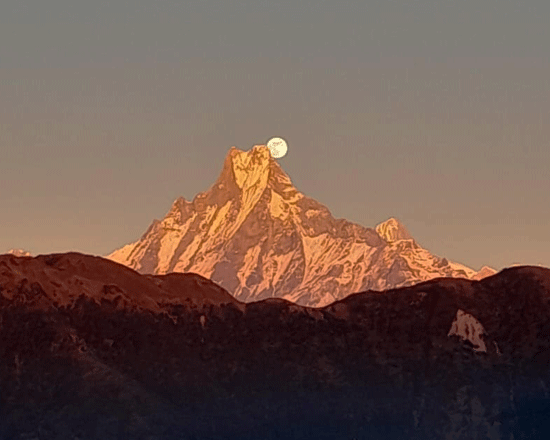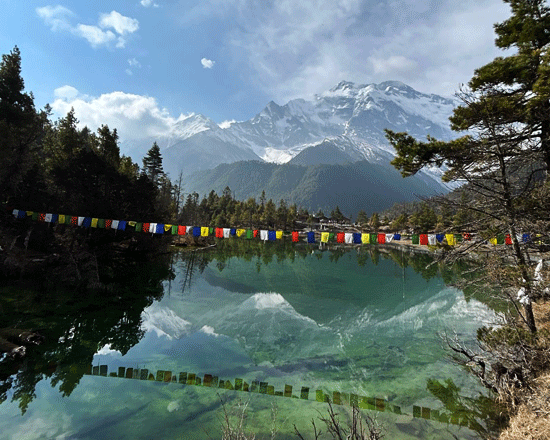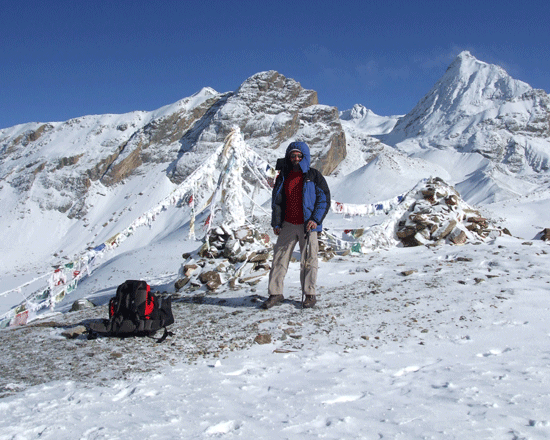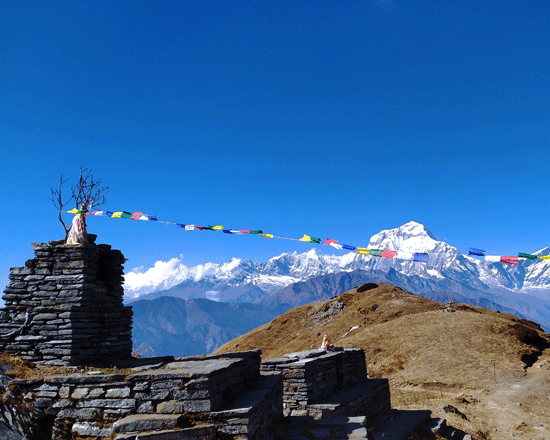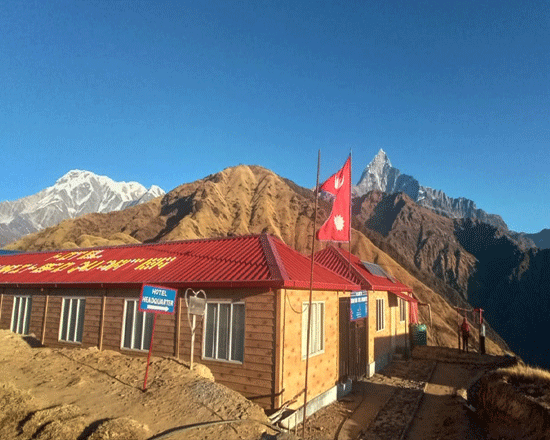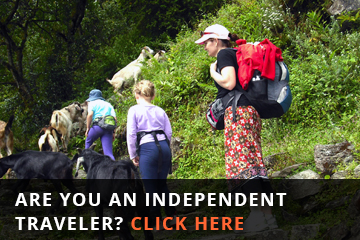Annapurna North Base Camp
Annapurna North Base Camp
Annapurna RegionTrip Facts
Since the terrain can be hard and the days long, hikers on these treks should be in good physical condition and have some previous mountain walking experience. Steep climbing may be involved, although it is never necessary to use ropes. Treks at this level can he arranged for periods of 16 to 21 days. Typically, a gradual ascent through a green river valley will lead you up to a number of high passes, where you will reach the altitude of 5416m. Often times, you will get a close insight into the Tibetan culture. Participants should expect to trek above 5416m/17872ft.
100%
Overview
North Annapurna Base Camp Trek 7 days package itinerary
The Annapurna North Base Camp Trek is for adventurers who seek excitement in the less-explored parts of the famous Annapurna region. Before 1950, people hadn’t been to the majestic Annapurna mountains. But the brave Maurice Herzog and Louis Lachenal, leading a French expedition team, did something incredible. In 1950, they made history by being the first to climb Annapurna I (8091 meters), a challenge that mountaineers had tried but failed to accomplish. The Annapurna North Base Camp trekking spot offers adventurers an unmatched journey through stunning landscapes, encounters with diverse cultures, and overcoming high-altitude terrain. In this 1200-word trip, we go on a virtual adventure, discovering the marvels of the Annapurna North Base Camp trek, from its rough paths to its peaceful mountain views.
The North Base Camp trek starts in Kathmandu, a lively city filled with the scent of incense and the lively hustle of both locals and tourists. After enjoying the city’s sights and sounds, we embark on a picturesque journey by road to Pokhara. Pokhara serves as the entry point to the Annapurna North Base Camp through Beni Tatopani and Upper Narchyang.
As we venture deeper into the Himalayas, the landscape undergoes a dramatic transformation, with terraced fields giving way to lush forests and snow-capped peaks towering in the distance. Our trekking route winds through quaint villages inhabited by diverse ethnic groups, offering us a glimpse into the rich cultural tapestry of Nepal.
Challenges and Rewards
The Annapurna North Base Camp trek is not for the faint of heart. As we ascend higher into the mountains, the air grows thin, and the terrain becomes increasingly rugged. Yet, with each step, we discover panoramic views of snow-capped peaks, cascading waterfalls, and emerald-green valleys stretching out below.
The Enchanting Annapurna North Base Camp trek
The Nepal Wilderness Trekking Team presents a new trekking itinerary to the base camp of Annapurna I, located on the northwest side of this iconic peak. Although the trek poses significant challenges, it offers the opportunity to explore the Himalayas in a way that few others do. The journey unfolds amidst panoramic views of Annapurna I, Nilgiri, Annapurna South, Hiunchuli, Machhepuchare, and Dhaulagiri, to name just a few of the awe-inspiring peaks that grace the horizon. Natural hot springs and immersion in the rich Gurung culture further enhance this adventure.
The Trekking Route
Journey begins with the beautiful city of Pokhara and leads to Nayapul, where the Ghorepani Poon Hill route begins. The first few days take you through the familiar landscapes of Mohare Danda, Palate, and Narchyang before heading toward the north base camp of Annapurna I.
You’ll traverse Kalokhola, Phulbari, and lush pastures near the base camp as you trek. It’s on the ninth day that you’ll reach the base camp itself, a momentous achievement on your trekking odyssey. The return journey takes approximately three to four days, and you can choose a route via Lete in Lower Mustang.
Cultural Encounters
Beyond its natural beauty, the Annapurna region is also home to a vibrant tapestry of cultures and traditions. Along the trekking route, we encounter friendly villagers belonging to ethnic groups such as the Gurungs, Thakalis, and Manangis, each with their unique customs and way of life.
We are welcomed into their homes with warm smiles and cups of steaming chai, as they fascinate us with tales of ancient legends and local folklore. Through these encounters, we gain a deeper appreciation for the resilience and spirit of the people who call these rugged mountains home.
Camping Through Pristine Wilderness
It’s important to note that along the new trekking route, there are no lodges or hotels. As a result, trekkers must be prepared for camping, adding an extra layer of adventure to their journey. The absence of modern facilities only heightens the sense of connection with nature and the wilderness. Adventure trekkers and photographers will find this experience immensely rewarding.
Professional Support and Guidance
To ensure your safety and enjoyment throughout the trek, Nepal Wilderness Trekking provides highly qualified and experienced trekking guides and sherpas. Moreover, these experts possess the knowledge and expertise needed to navigate the challenges of this trail. Consequently, you can focus on the breathtaking landscapes and the thrill of adventure.
A Hidden Gem in the Annapurna Region
The Annapurna North Base Camp Trek offers a pristine and less-explored alternative to the well-trodden paths of the Annapurna Sanctuary trek. For those seeking a different perspective on the Annapurna region, this trek promises an adventure that is as unique as it is exhilarating.
Promoting a Historic Trek Route
The Annapurna Rural Municipality (ARM) group explored this route in 2019, paving the way for its promotion as a historic trekking route. Trekking associations like the Trekking Agency Association of Nepal (TAAN), the Annapurna Conservation Area Project (ACAP), and the Ministry of Tourism have joined efforts to promote this trekking gem to various groups, travel agencies, and individual trekkers.
Food and Accommodation
During the Annapurna north base camp trek accommodations are available up to Upper Narchyang, where hotels and guesthouses are found along the trekking trail. However, beyond Narchyang, such accommodations are scarce, necessitating overnight camping. Food requirements, including two meals and breakfasts, are managed by your tour provider. Nepal Wilderness Trekking ensures you have all the necessary materials for your trek, from cooking utensils and medical kits to hiking poles and tents.
In conclusion
The Annapurna North Base Camp Trek offers an extraordinary journey into the heart of a region that remains largely undiscovered by mainstream tourism. Consequently, it presents a unique opportunity to explore the hidden treasures of the Ruby Valley. Additionally, you will have the chance to immerse yourself in diverse cultures and witness the grandeur of the Ganesh Himal range. With Nepal Wilderness Trekking as your trusted guide, you are poised to embark on this unforgettable adventure. Each step, in turn, takes you deeper into the heart of the Himalayas. Therefore, gear up, embrace the challenge, and prepare for an adventure that will indelibly etch memories into your soul.
Alternatives
The other alernative trekking route withinn the annapurna conservtion area are:
5 Days Annapurna Base Camp Trek
Mardi Himal vs Annapurna Base Camp Trek
Detail Itinerary
- Day 1: Drive from Pokhara to Tatopani via Beni Tatopani (6-7 hours) and trek to Upper Narchyang (2 hours). (Homestay) Overnight at Upper Narchyang 2140m.
- Day 2: Narchyang to Chhotepa (7 hours-14km approx) via Lekhgaun, Ghalemdi, and Mristi Khola. (Camping) Overnight at Chhoteopa 2370m.
- Day 3: Chotepa to Sandhikharka (6-7 hours, 9 km approx.) through Humkhola. Stay at Sandhikharka (3160m). Camp.
- Day 4: Basket Mela leads from Sandhikharka to Annapurna North Base Camp (A.N.B.C. 7-8 hours, 9.5km). Spend the night at ANBC 4068m. (Camping)
- Day 5: Explore North Annapurna Base Camp glaciers (4190m) and trek to Sandhikharka (7.5 hours - 9.5km approx.). Overnight at Sandhikharka 3160m. (Camping)
- Day 6: Trek Sandhikharka to Lower Narchyang via Humkhola-Chhotepa, 6-7 hours. Trek, then drive (1.5 hours) down to Lower Narchyang. Overnight in Lower Narchyang (homestay or local lodge).
- Day 7: Trek to Tatopani and drive back to Pokhara (6-7 hrs)
Cost Included
- Hotel to Bus Park by taxi.
- Kathmandu to Tatopani by local bus. And Tatopani to Kathmandu by local bus.
- Full Camping accommodation is on the way.
- Meals three times a day (Breakfast, lunch, and dinner)
- ACAP permits and TIMS card.
- One fluent English speaking, the government registered, experienced, first aid trained guide and required porters.
- Equipment: sleeping bags and Jackets.
- Guide food, lodge, bus transportation, salary, insurance, equipment, etc.
Cost Excluded
- Kathmandu Hotel
- all beverages, Hard and soft table drinks such as Coke, Fanta, mineral water, hot shower, dessert, etc.
- Personal insurance.
- Rescue operation charge.
- Tip for guide & porter.
- Excluded are all costs and expenses not listed under "cost includes"
- Inclusion of costs or delays beyond the control of the management, such as landslides, weather conditions, itinerary modifications due to safety concerns, illness, changes in government policies, strikes, etc.

